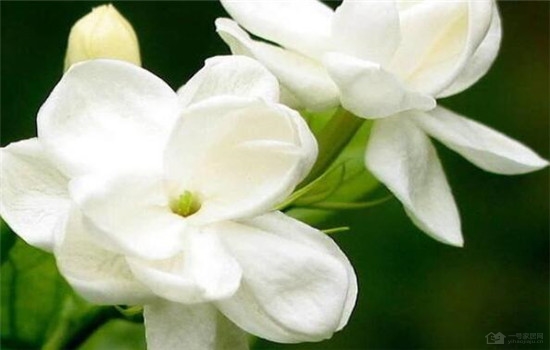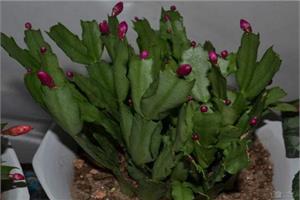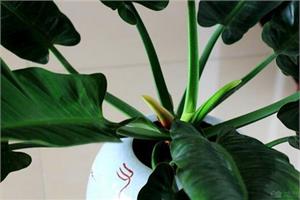The method of cultivating jasmine flowers the house is full of the scent of jasmine flowers
There are many descriptions of jasmine in literature, film and television works, and many people also like jasmine, which is white, quiet and fragrant. In order to better retain jasmine, many people will raise good jasmine indoors, so that it can grow more beautiful. The following is to introduce the method of jasmine culture for you.

1. Pot soil selection and pot method of jasmine culture
The culture soil of jasmine potted culture should be rich in organic matter, and have good water retention, permeability and aeration properties. 4 parts of rotten leaf soil, 3 parts of garden soil, 2 parts of river sand, 1 part of cake fertilizer or livestock and poultry manure can be mixed into culture soil, or 5 parts of rotten leaf soil, 4 parts of sandy loam and 1 part of cake fertilizer should be mixed, and bone powder should be put at the bottom of the basin as base fertilizer.
The upper basin should be carried out before the new shoots germinate from March to April. After putting on the basin, put it in a shady place to avoid blind sunlight. After returning to normal growth, you should give sufficient light.
Potted jasmine should be changed every 1-2 years and replaced with new culture soil. Generally do not go to the root when changing the basin, but should pour water thoroughly, put shade place to restore growth, and pay attention to loosen the soil.
two。 Watering method of jasmine culture
Watering is the key to the growth of potted jasmine. If you water too much, the leaves will suddenly turn yellow; the basin soil will be too wet for a long time, resulting in poor soil ventilation, resulting in rotten roots, leaves yellowing and shedding, resulting in plant death. If the rotten root is caused by too much watering, the flowerpot can be moved to a cool place, and stop fertilization, control watering, and often loosen the soil, so that the basin soil is well ventilated and promote the plant to germinate new roots.
Watering should be determined according to season and temperature. From April to May in spring, branches and long leaves can be watered once every 2 to 3 days, preferably around noon; June is the spring blossom period, watering can be slightly more, and should be watered once a day; July to August in summer is the high temperature period, which is also the flowering period of jasmine, which requires watering once in the morning and once in the evening, spraying water on the leaves once or twice a day, and sprinkling water around the flowerpot to increase air humidity. The amount of watering is gradually reduced in autumn, and can be watered once every two days from September to October, and it should be strictly controlled to keep the basin soil slightly moist in winter, usually once every 5 to 7 days. If the humidity of the potted soil is too high, the roots are easy to blacken and rot, and the leaves turn yellow and fall off. When it is found that the leaves have just turned yellow, pay attention to stop watering, work for a few more days, and then gradually water them properly to restore their normal growth.
Jasmine likes slightly acidic soil, such as alkaline soil, the leaves will turn yellow. 0.2% ferrous sulfate should be irrigated every 10 to 15 days during the growth period to keep the basin soil acidic.
3. Fertilization methods for jasmine culture
Jasmine has a long flowering period and needs more fertilizer, so the potted soil should have sufficient fertility. It is necessary to grasp the principle of frequent application of thin fertilizer, especially in the period of flower bud formation. But fertilizing too much, too thick, easy to cause rotten roots. It is better to apply fertilizer in the evening, loosen the basin soil before application, and be careful not to apply fertilizer when the basin soil is too dry or too wet, and the effect is the best when the basin soil is half moisture. Jasmine likes acid soil, so "alum fertilizer water" can be used as topdressing. From sprouting in spring to late September, mature thin cake fertilizer and water should be applied every 7 to 10 days with a concentration of 15% to 20%.
During the period of pregnant bud flowering, thin fertilizer should be applied frequently, about once every 5-7 days, with a concentration of 10%-15%. When applying fertilizer, phosphorus and potassium fertilizer should be added, and 0.1% potassium dihydrogen phosphate or 0.5% calcium superphosphate solution can be added to the cake fertilizer solution to promote flower bud differentiation; if long-term application of too much nitrogen fertilizer, phosphorus and potassium fertilizer is small, it is easy to cause plant growth and affect flower bud formation, resulting in non-flowering or few flowering. Fertilization should be stopped from October to improve the maturity of branches and be beneficial to overwintering.
If you want to raise jasmine well, you can start with fertilization, watering, soil and so on. I believe that under the attention of these elements, the jasmine in your home must be able to grow better and better, and the more brilliant the flowers will bloom.
- Prev

The method of keel flower culture is completely solved to add beautiful scenery indoors and outdoors.
The method of keel flower culture is completely solved to add beautiful scenery indoors and outdoors.
- Next

Emerald Flower Culture method it is not difficult to raise emerald every day
Emerald Flower Culture method it is not difficult to raise emerald every day
Related
- Wuhan Hospital Iron Tree Blooming Result Was Instantly Frightened by the Gardener Master
- Which variety of camellia is the most fragrant and best? Which one do you like best?
- What is the small blue coat, the breeding methods and matters needing attention of the succulent plant
- Dormancy time and maintenance management of succulent plants during dormancy
- Minas succulent how to raise, Minas succulent plant pictures
- What are the varieties of winter succulent plants
- How to raise succulent plants in twelve rolls? let's take a look at some experience of breeding twelve rolls.
- Attention should be paid to water control for succulent plants during dormant period (winter and summer)
- Watering experience of twelve rolls of succulent plants
- Techniques for fertilizing succulent plants. An article will let you know how to fertilize succulent plants.

